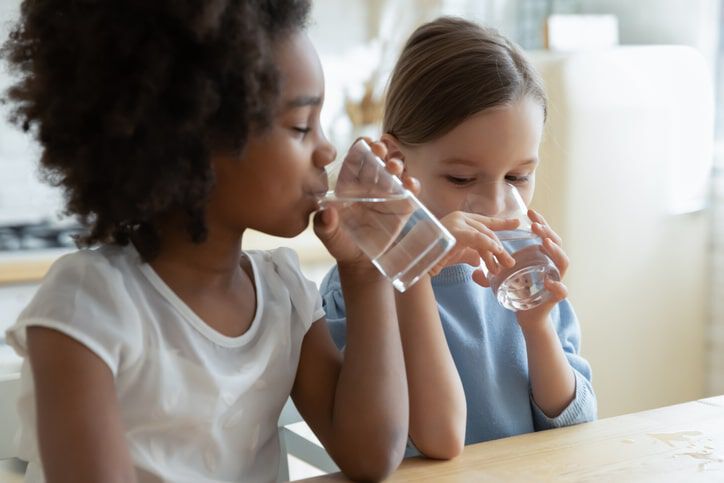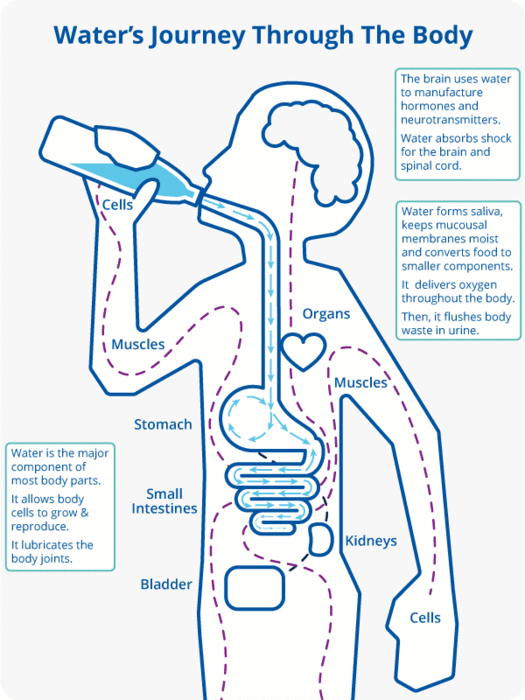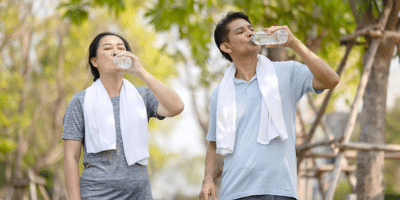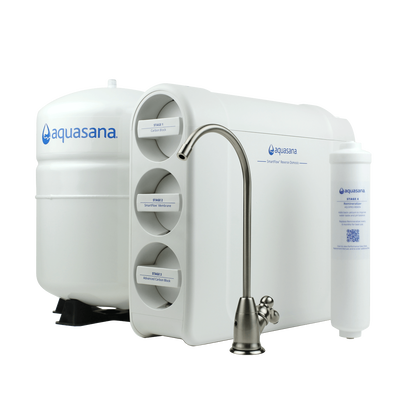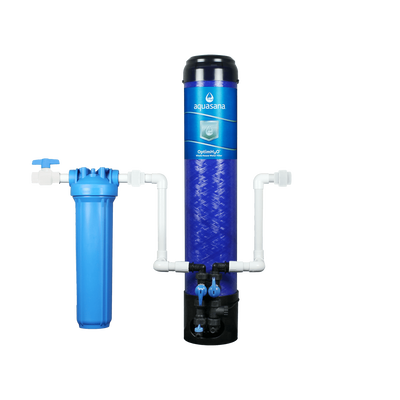4. Through breathing
The majority of the water you drink is absorbed into your bloodstream. Absorption occurs after water passes through the stomach and into the small intestine. The small intestine, at around 20 feet long, is the organ primarily responsible for water absorption through its walls and into the bloodstream. From here, water will travel to cells across the body, providing them with the hydration to perform daily functions efficiently.
The large intestine also absorbs some water to support digestion. A lot of people wonder how long water takes to digest but the thing is, water isn’t technically digested - it’s absorbed. However, it’s a crucial element for digestion, especially when digesting protein. Water should always be consumed with meals so that your body can properly digest and absorb the nutrients from food. Properly filtered water is ideal because it does not contain harmful chemicals and contaminants that can upset the digestive process. Fortunately, several types of water filters exist now for healthier and safer drinking water.
UNDER SINK WATER FILTER
Claryum® 3-Stage Max Flow
Remove up to 99% of 77 contaminants, plus sediment. Now with 44% faster water flow for ultimate hydration.
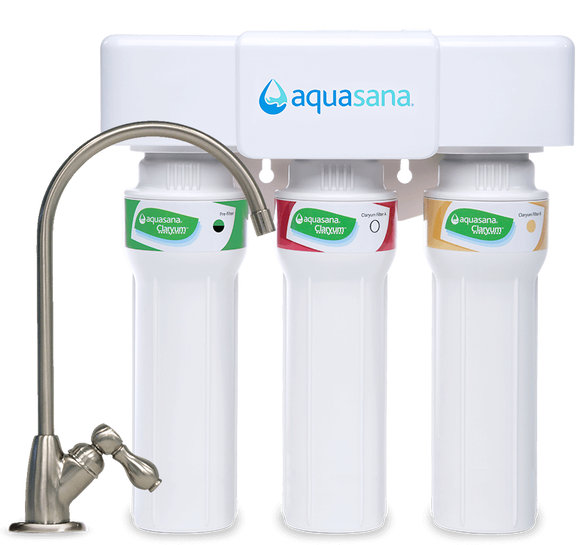
How long does it take for water to go through your system?
The short answer: it’s different for everyone. The amount of water absorbed in the stomach and how quickly water is absorbed depends, in part, on how much has been eaten. If someone is drinking water on an empty stomach, they are more likely to experience a faster rate of water absorption – as quick as 5 minutes after taking a drink. Whereas, if a person has eaten a lot of food before they drink water, the speed of absorption will slow down accordingly and absorption could take up to a few hours.
The average person can process about 33.8 ounces of fluid per hour, but only 20% of the water that you drink actually makes it through the entire process to the bladder. Along the journey, water will stop to perform many other necessary errands like lubricating organs, removing waste, regulating body temperature, and aiding nutrient absorption.
Many people wonder how long it takes to pee after drinking water, but it depends on a variety of factors. Generally, it takes your body 9 to 10 hours to produce 2 cups of urine. A properly hydrated person with an almost full bladder will need to urinate between five to fifteen minutes after drinking water. But for someone who’s dehydrated with an empty bladder, it could sometimes be up to nine hours before needing to urinate.
How long does it take for water to flush out toxins?
It depends on how hydrated a person is, as your body will likely eliminate toxic substances through urination. This is primarily the job of the kidneys, but to filter toxins efficiently, kidneys require a large amount of fresh water. If the kidney does not receive enough water, it could lead to health concerns including kidney stones and other kidney-related diseases.
Fortunately, one way the kidneys inform someone of whether they’re providing their body with enough water is by concentrating the amount of water expelled through urine – thus changing the color of urine to bright yellow. Drinking filtered water is one of the best ways to support your kidneys because it can remove some of the toxins, reducing the strain on your body.
Filtered water can indeed make the water absorption process easier since there are fewer toxins and contaminants. Unfortunately, many contaminants are found in tap water including potential toxins. Because water affects so many parts of our bodies and health, it is crucial to drink healthier, filtered water that’s free of harmful toxins and contaminants.
One of the most effective water filters removes most harmful particulates while remineralizing the water. Aquasana’s SmartFlow™ Reverse Osmosis filter effectively removes up to 90 harmful contaminants including more than 99.99% of asbestos and cysts, 99% of lead and microplastics, 96% of chlorine and arsenic, and 90% of fluoride in addition to several other tap water hazard in addition to a remineralizer to restore healthy minerals lost in the filtration process.
